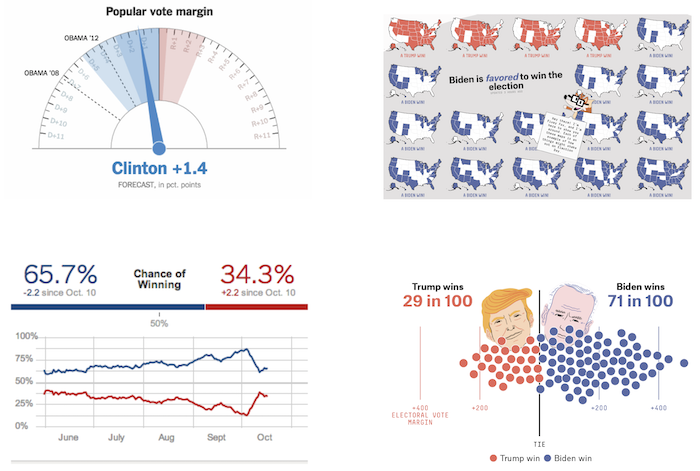Information, incentives, and goals in election forecasts
Andrew Gelman, Jessica Hullman, Christopher Wlezien and George Elliott Morris
Judgment and Decision Making 2020

Some displays of uncertainty in presidential election forecasts. Top row: 2016 election needle from the New York Times and map icon array from Fivethirtyeight in 2020. Bottom row: time series of probabilities from Fivethirtyeight in 2012 and their dot distribution in 2020. No single visualization captures all aspects of uncertainty, but a set of thoughtful graphics can help readers grasp uncertainty and learn about model assumptions over time.
Abstract
Presidential elections can be forecast using information from political and economic conditions, polls, and a statistical model of changes in public opinion over time. However, these “knowns” about how to make a good presidential election forecast come with many unknowns due to the challenges of evaluating forecast calibration and communication. We highlight how incentives may shape forecasts, and particularly forecast uncertainty, in light of calibration challenges. We illustrate these challenges in creating, communicating, and evaluating election predictions, using the Economist and Fivethirtyeight forecasts of the 2020 election as examples, and offer recommendations for forecasters and scholars.
PDF
